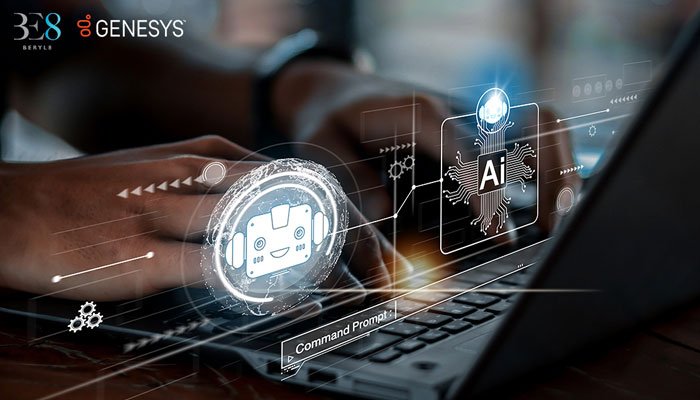Integrated digital ecosystems deliver innovative customer experiences

Finger on the Pulse is a series where we explore the major trends shaping business technology. In each post, you’ll learn from one of our key partners and their perspective on an industry trend through the lens of their unique business. Our last post explored the power of automation to drive agility and growth. This interview is focused on how smart integration helps enterprises deliver competitive customer experiences.
Customer experience
It’s well known that customer expectations have risen dramatically in the past few years. It’s less well known that the key to meeting and exceeding those expectations is integration.
Customers in both B2C and B2B markets are looking for speed, personalization, and seamless transitions between channels at every stage of their journey. But for many enterprise companies, the size of their operations and the complexity of their offerings make speed difficult to achieve at scale. Siloed data is often spread among legacy systems and across departments, making personalization challenging for customer touchpoints. And creating seamless customer movement between channels is difficult when the processes and software supporting those channels are disconnected.
In this interview, you’ll discover how MuleSoft and Deloitte Digital help companies solve these challenges by developing a unified technology architecture with MuleSoft. We spoke with Kurt Anderson, Managing Director and API Transformation Leader at Deloitte Consulting LLP, to learn how they’re helping clients around the world build digital ecosystems that deliver innovative customer experiences.
Tell us about how Deloitte Digital partners with MuleSoft to help clients keep up with customer expectations
Our clients have been asked to provide seamless, omnichannel experiences that incorporate personalization and over-deliver on customer service. It used to be that it was ok if only one leading player in the market had a great mobile experience or an innovative web experience or could transfer you from a mobile app to a call center seamlessly. Now, those standards for customer experience are table stakes for most players in an industry.
The problem is that many enterprise companies don’t have the digital architecture necessary in place before the project begins to create and deliver those kinds of capabilities quickly or at scale. Deloitte Digital brings together teams that combine industry experts and integration specialists to help our clients modernize the technology foundation that drives seamless customer experiences. And we’ve found that MuleSoft is one of the best solutions for building that connected enterprise architecture.
What are some challenges your clients are facing in their effort to improve customer experiences, and how does MuleSoft help overcome them?
Two challenges we see most often are talent management and scalability. From a talent standpoint, getting the right people in the right place to solve the right problems at the right time is an enormous undertaking. Customers want smooth and consistent journeys that move across a variety of systems and departments. So each team that influences a customer touchpoint has to have the expertise, the tools, and the data necessary to meet customer expectations that have never been higher.
Companies who pull together and retain the talent they need to deliver engaging experiences often find that scalability becomes their next big challenge. The financial services industry is a great example. There’s so much rapid growth and technology innovation among competitors (like fintechs) in the market that scalability is critical to retaining long-term value and a competitive edge.
MuleSoft has made a dramatic difference in helping our clients overcome both of these challenges. We can contribute to employee satisfaction when we simplify their job with a unified digital ecosystem that gives them the tools and data they need to deliver amazing customer experiences. MuleSoft makes it possible to develop and deliver the capabilities that customers expect with less hassle and in less time.
That operational efficiency has obvious benefits for scalability as well. Imagine an insurance company that is struggling to keep up with customer service tickets after the launch of a new product. A highly connected and integrated digital ecosystem powered by MuleSoft makes it possible to quickly launch self-service features on an app or website. That way, customers can resolve their simplest issues on their own time and let your service centers prioritize the cases that need the most hands-on attention.
Can you give examples of business outcomes your clients realize when they improve their digital ecosystem to keep up with rising customer expectations?
There are a lot of practical benefits that come from a modernized and integrated enterprise architecture. If we go back to the financial services example, reducing time-to-market for new products or features can make all the difference in keeping up with competitors and delighting customers.
Maybe an insurance company wants to add a quoting feature to its mobile app, or a large bank wants to incorporate more personalization into its marketing. With buried data in legacy systems and siloed software applications, bringing those projects to life is going to be slow, cumbersome, and prone to errors depending on the reliability of the data. But with MuleSoft, even our largest enterprise clients are launching and scaling their projects at speeds that they didn’t think were possible.
Another business outcome that sometimes flies under the radar is improved employee experiences. In the long term, happy employees create happy customers, and you support happy employees by giving them the time and tools they need to do their jobs effectively.
When we help our clients implement MuleSoft, it improves collaboration by breaking down the siloes between departments and software platforms. It also makes data more accessible so teams can make more informed and strategic decisions. And those benefits to the employee experience have a huge impact on the race to keep up with customer expectations and build long-term loyalty.
How would you describe the role that automation plays in improving customer experiences with MuleSoft?
The best way to improve a customer experience is to launch a new partnership with another company. Think of a bank making their credit card compatible with mobile payment providers. To the customer, that seems like a simple and straightforward expectation. But for the bank, building that feature involves a complex web of data and systems – many of which are highly regulated and require multiple layers of encryption and security. With that kind of complexity, any manual processes are totally impractical to maintain the speed and scale of a credit card program. Smart and efficient automation are critical to delivering on customer expectations.
The beauty of MuleSoft is that not only does the platform itself include a lot of built-in automations, it also makes it simpler and easier to create new automations, and even reuse those automation building blocks for future projects or integrations. That modular approach to digital experiences and capabilities means that the ROI multiplies for each additional integration or partnership that a company implements as it grows and launches new upgrades to their customer experience.
To get more information about Mulesoft, contact here.



